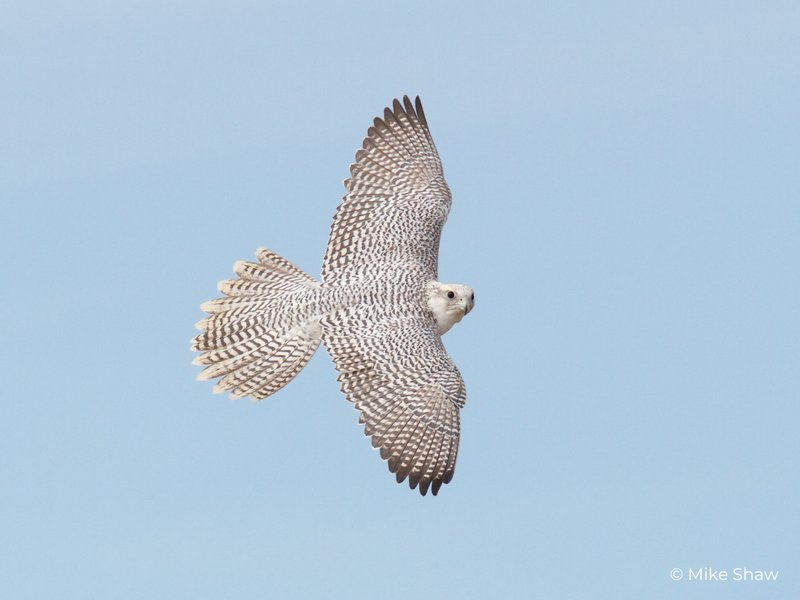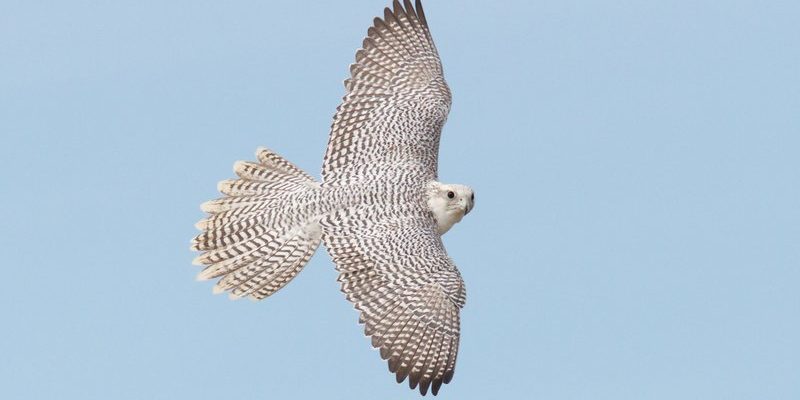
Imagine standing on a snowy cliff, binoculars in hand, watching a Gyrfalcon dive swiftly to catch its prey. The cold wind whips around you, but the sight is worth it. Now, think about what happens if that sheer beauty and remarkable hunting skill fade into memory. This scenario isn’t a fantasy—it’s a very real possibility if current conservation efforts don’t succeed. In this article, we’ll dig deep into the various strategies being used to protect the Gyrfalcon and why it matters.
Understanding the Gyrfalcon’s Habitat
Gyrfalcons are typically found in the cold, northern parts of the world—think Arctic tundra where the air is crisp and the landscape is dotted with snow. These birds thrive in such remote areas, nesting on cliffs and rocky outcrops, which provide safety and a good vantage point for hunting.
Here’s the thing: their habitat is not just a home; it’s also a hunting ground. Gyrfalcons feast on smaller birds and mammals, showcasing incredible agility during hunts. The health of their habitat is directly tied to their survival. If their environment suffers from climate change or human interference, it could jeopardize the birds’ future. Understanding where they live helps conservationists develop targeted efforts aimed at protecting these habitats from destruction.
The Impact of Climate Change
You might be wondering how climate change affects a bird like the Gyrfalcon. Well, it’s pretty significant. As the Earth warms, habitat changes become inevitable. The tundra areas are experiencing shifts in temperature and precipitation patterns, which can disrupt the delicate balance of the ecosystem that Gyrfalcons rely on.
The change in climate can lead to reduced food availability as their prey species might migrate or decline in numbers. This means Gyrfalcons have to expend more energy hunting or face starvation. Conservation efforts include studying these impacts closely to create adaptive measures. Organizations are working on projects that monitor climate patterns and their effects on Gyrfalcon populations, aiming to find solutions to protect both the birds and their habitats.
Protecting Nesting Sites
Nesting sites are critical for Gyrfalcons, and they often return to the same locations year after year. Unfortunately, these sites can become threatened due to human activities like mining, development, and tourism. Conservationists recognize that preserving these nesting areas is crucial for the species’ ongoing survival.
Efforts include establishing protected areas where Gyrfalcons can nest without disturbance. This might involve creating special zones in popular tourist spots where human activity is limited during breeding seasons. It’s all about giving the Gyrfalcons a safe space to raise their young. Monitoring these sites helps ensure best practices are followed, keeping both the birds and the landscape safe from harm.
Research and Monitoring Programs
To protect the Gyrfalcon effectively, researchers need to understand their behaviors, migration patterns, and population dynamics. This is where research and monitoring programs come into play. Scientists use various methods, including satellite tracking, to gather data on where Gyrfalcons go and how they interact with their environment.
This research is crucial. By understanding migration routes, conservationists can identify threats along these paths—like areas with high rates of hunting or pollution. With this knowledge, they can advocate for protective measures in those areas. Additionally, researchers often collaborate with local communities, helping them understand the significance of the Gyrfalcon. The more people know about these majestic birds, the more likely they are to support conservation efforts.
Community Involvement in Conservation
Community involvement is key to the success of conservation efforts. Local people can be powerful allies in protecting the Gyrfalcon. Programs that educate communities about the importance of the species and encourage them to participate in conservation initiatives can have a lasting impact.
For example, workshops can teach local residents how to monitor Gyrfalcon populations safely and effectively. People might also be encouraged to take part in clean-up efforts or participate in wildlife surveys. When communities feel connected to the Gyrfalcon, they become invested in its future. This grassroots approach not only benefits the birds but also fosters a sense of pride among locals.
Combating Illegal Hunting and Trade
Illegal hunting poses a severe threat to Gyrfalcons. Despite their strength and beauty, these birds are sometimes hunted for sport or captured for the illegal pet trade. To combat this problem, many conservation efforts focus on raising awareness about the consequences of illegal hunting.
This involves working with law enforcement to crack down on poaching and trafficking. Conservationists hold campaigns that educate the public about the importance of protecting these birds and the laws against hunting them. The goal is to create a culture where the Gyrfalcon is valued for its role in nature, not seen just as a trophy.
The Role of Technology in Conservation
Technology is changing the game for wildlife conservation. For the Gyrfalcon, tech tools like drones and camera traps are being employed to monitor populations and habitats more efficiently. Drones can survey remote areas, providing data without disturbing the birds, while camera traps can collect information on Gyrfalcon activity.
These tools can help spot threats early, such as changes in habitat or illegal activity. By harnessing technology, conservationists can make more informed decisions and respond quickly to emerging issues. It’s like having a high-tech assistant that keeps an eye on things, ensuring the Gyrfalcon continues to soar through those beautiful, northern skies.
In conclusion, protecting the Gyrfalcon is not just about saving a single species; it’s about preserving the delicate balance of our ecosystem. Through habitat conservation, climate change research, and community involvement, there’s hope for this incredible bird and its future. Together, we can ensure that the Gyrfalcon remains a majestic presence in our skies for generations to come. So the next time you spot one, you’ll know that behind its beauty lies a world of effort and dedication aimed at keeping it alive.

